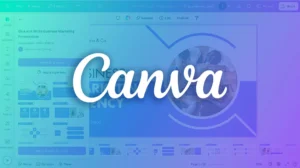Infographic design has become increasingly popular over the years. These visual representations of information are a great way to convey complex ideas and data in a more digestible format. In this article, we’ll review some key considerations when creating a compelling infographic.
Define your purpose and audience.
The first step in creating an infographic is to define your purpose and audience. What is the goal of the infographic? Are you trying to educate, persuade, or simply entertain? Who is your target audience? What do they know already, what do they need to know, and what are their interests and motivations?
By understanding your purpose and audience, you can make informed decisions about the design and content of your infographic. For example, if your audience is highly visual, you may want to focus on creating a more image-heavy infographic. If your audience is more data-driven, you may want to focus on presenting your information in a more structured and logical format.
Research and gather your data.
The next step in creating an infographic is researching and gathering your data. This may involve conducting surveys, reviewing reports, or analyzing existing data sets. It’s important to ensure that your data is accurate and up-to-date, as any inaccuracies could undermine the credibility of your infographic.
Once you have your data, you need to determine what information to include in your infographic. Analyzing your data and identifying the key insights and trends you want to communicate. It’s essential to strike a balance between including enough information to be informative without overwhelming your audience with too much detail.
Choose your design elements.
The design of your infographic is crucial in ensuring that it effectively communicates your message. When choosing your design elements, consider the purpose and audience of your infographic. Some key design elements to consider include the following:
- Color: Use color to highlight important information, create a visual hierarchy, and evoke emotions.
- Typography: Use typography to help convey tone and personality and ensure your text is easy to read.
- Icons and illustrations: Use icons and illustrations to add visual interest and help convey complex ideas in a simple and accessible way.
- Charts and graphs: Use charts and graphs as an effective way to present data in a clear and structured format.
Use a clear and logical layout.
The layout of your infographic is important in ensuring that your information is presented clearly and logically. A well-designed layout can help your audience quickly understand the flow of information and identify key insights. Some tips for designing a clear and logical layout include:
- Use a visual hierarchy: Use size, typography, and colors to create a visual hierarchy that guides the reader through the infographic.
- Group-related information: Grouping related information together can help to create a clear and logical flow of information.
- Use whitespace: Whitespace can help to create a sense of balance and prevent your infographic from feeling cluttered.
Test and refine your infographic design
Test and refine your design once you have created your infographic. This involves getting feedback from your target audience and making any necessary adjustments to improve the effectiveness of your infographic. Some tips for testing and refining your design include:
- Share your infographic with a small group of people and ask for feedback.
- Consider conducting a survey to gather more detailed feedback.
- Use analytics tools to track how your audience interacts with your infographic.
Conclusion
Infographic design is a powerful tool for communicating complex ideas and data in a more accessible format. Define your purpose and audience. Research and gather your data. Choosing your design elements. Use a clear and logical layout. Test and refine your design. All these will help you create an effective infographic that engages and informs your audience.









